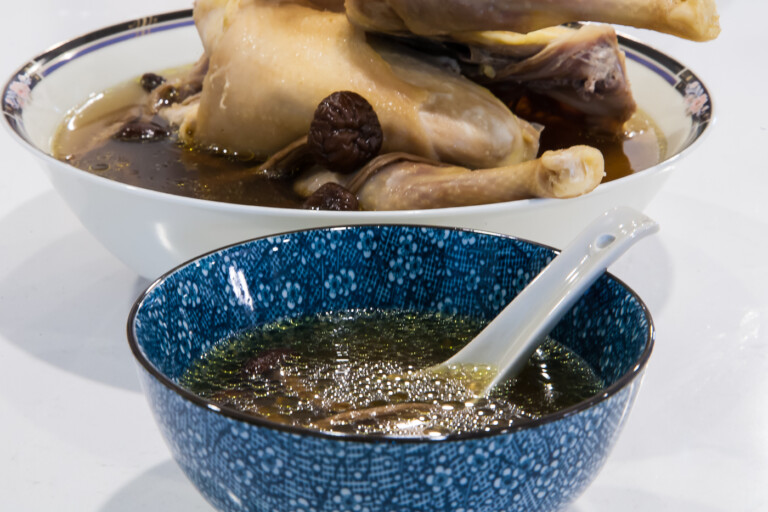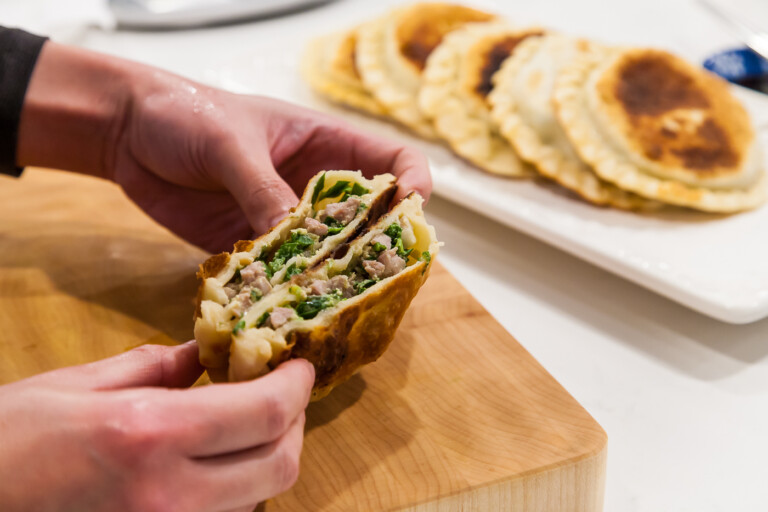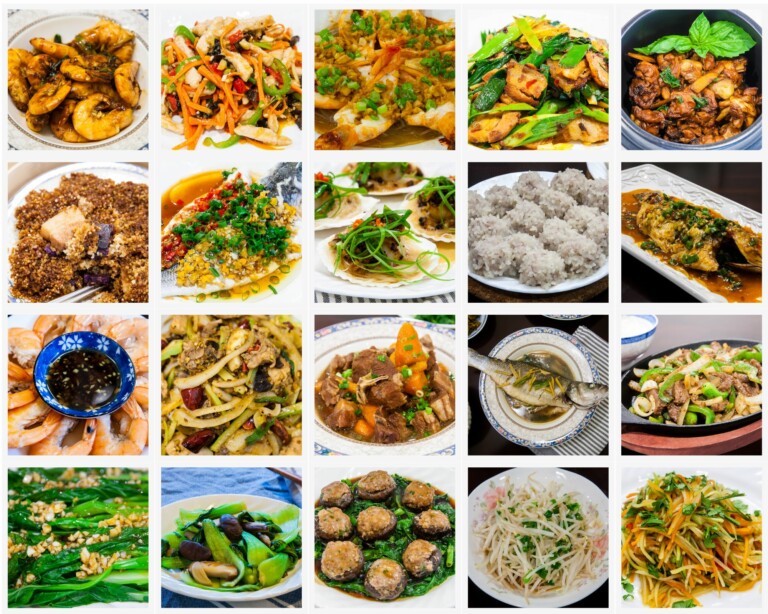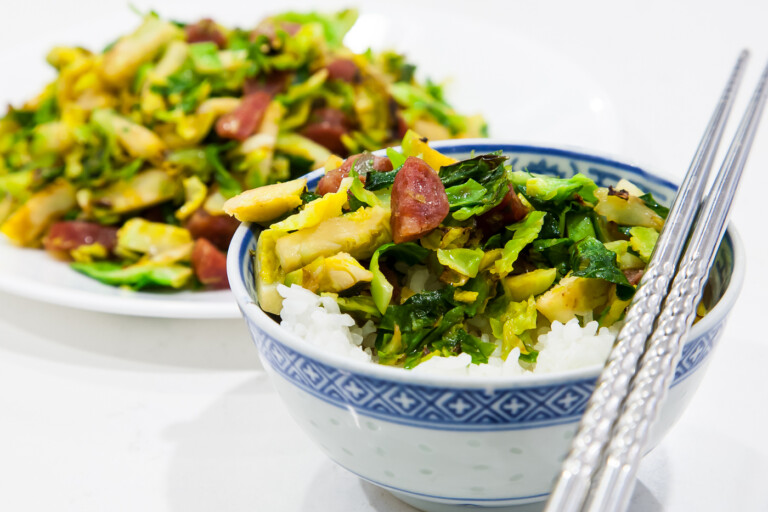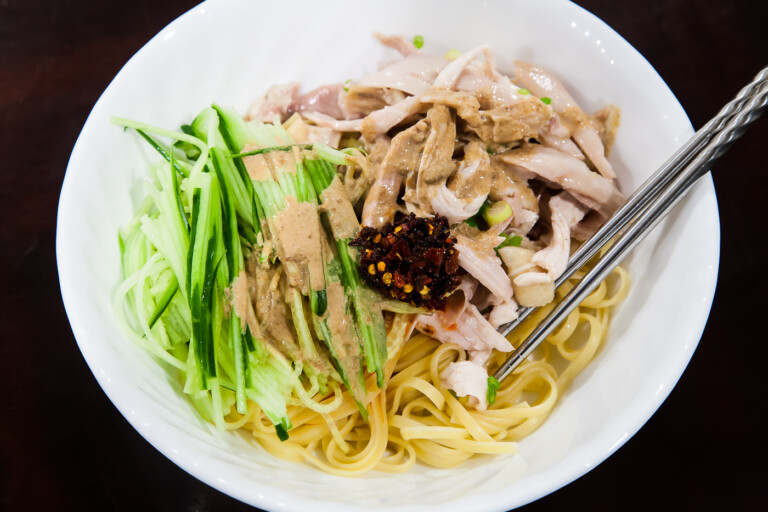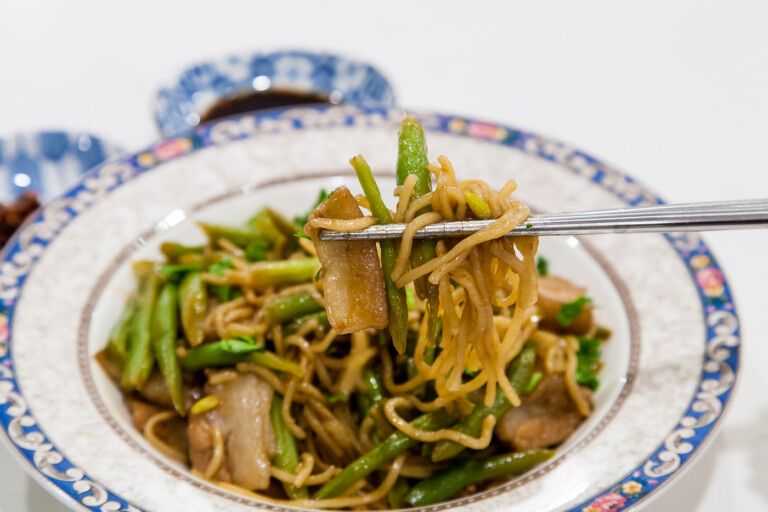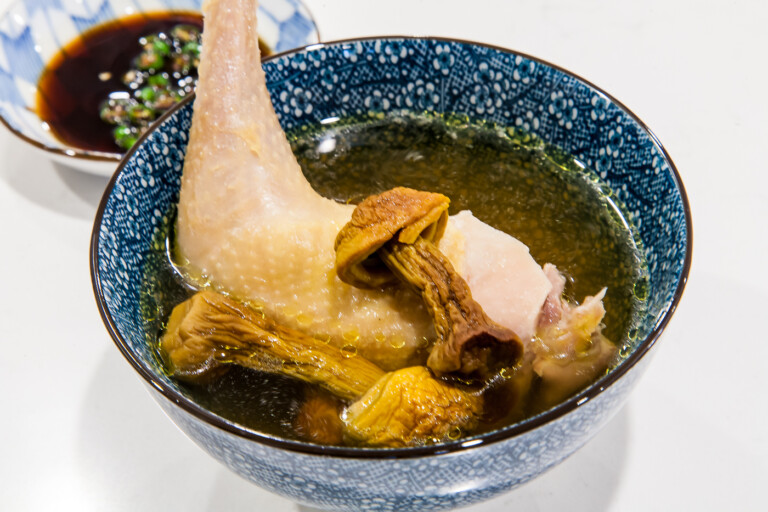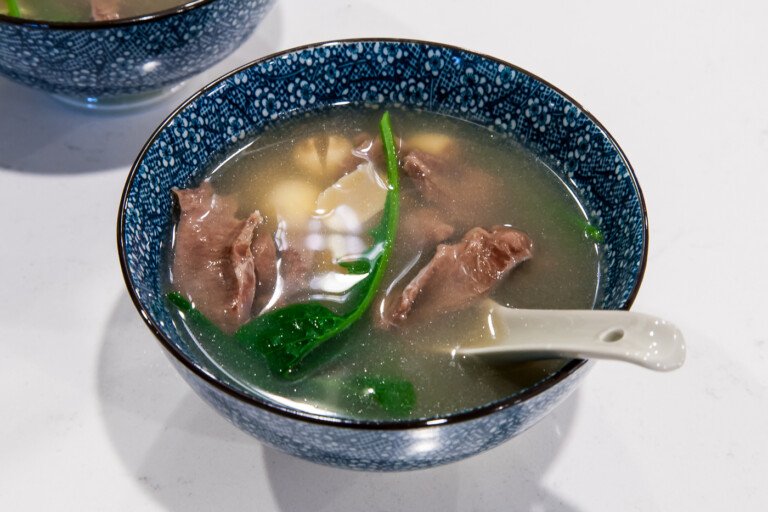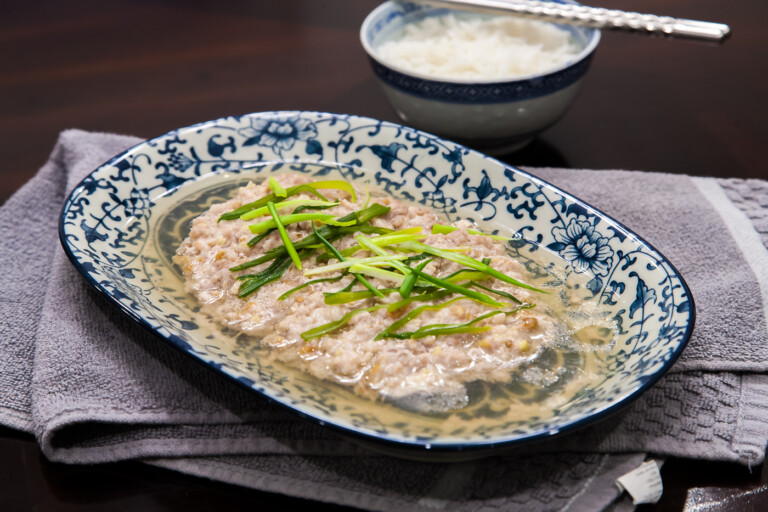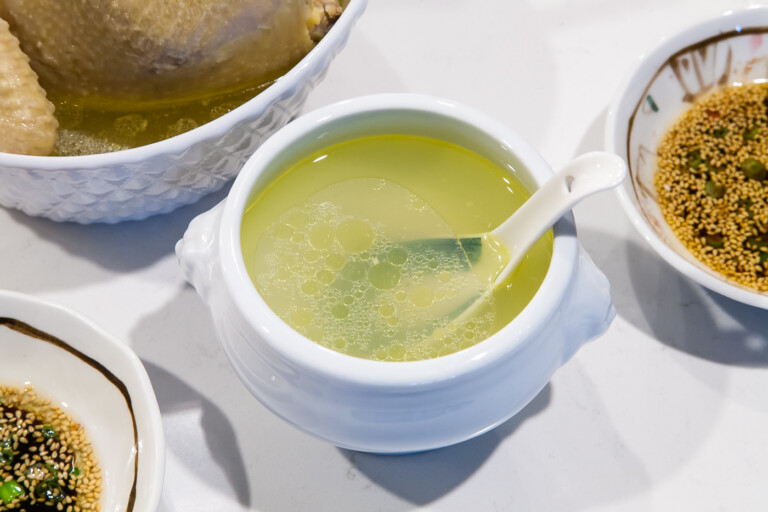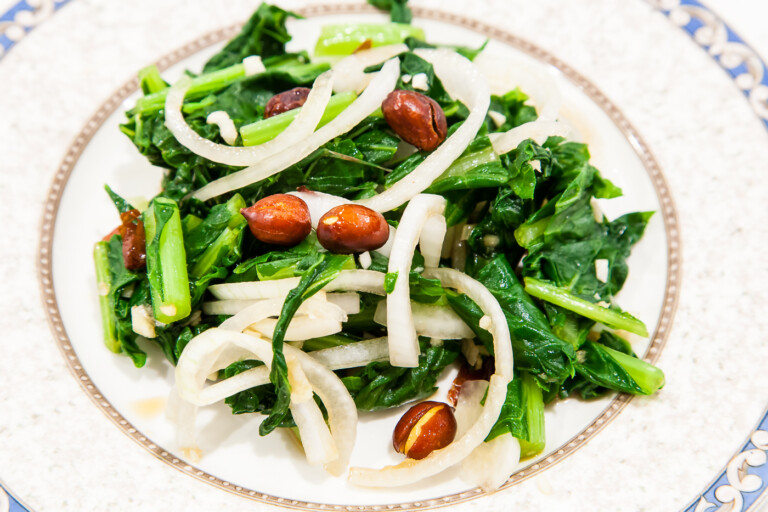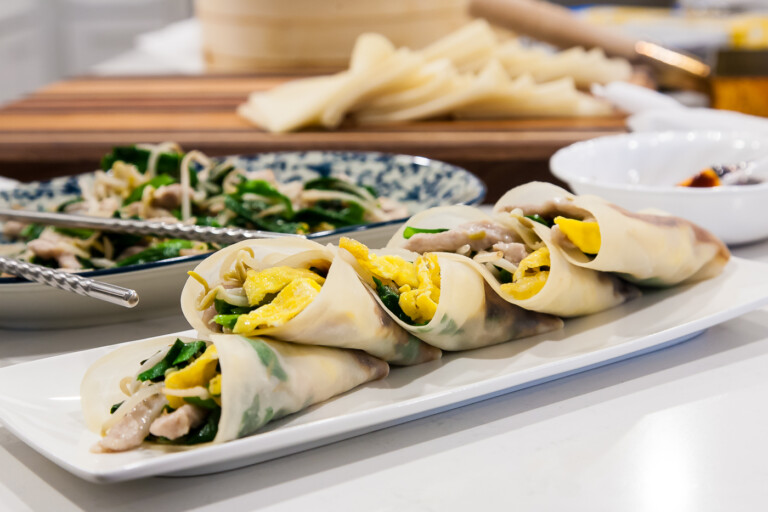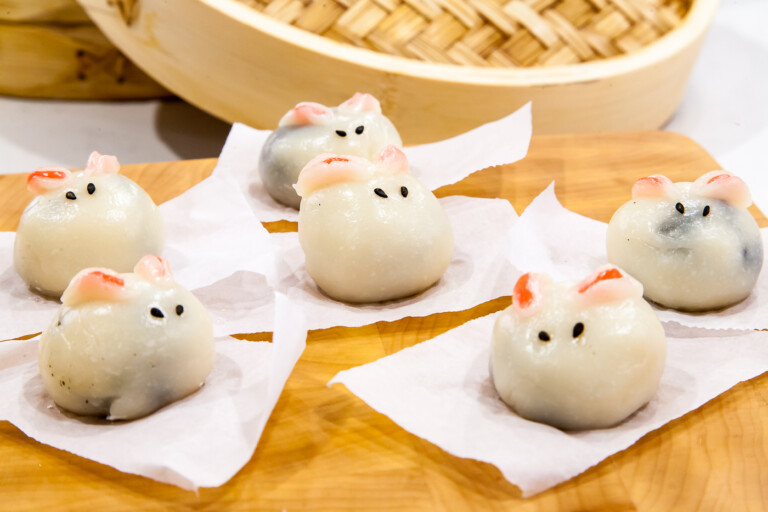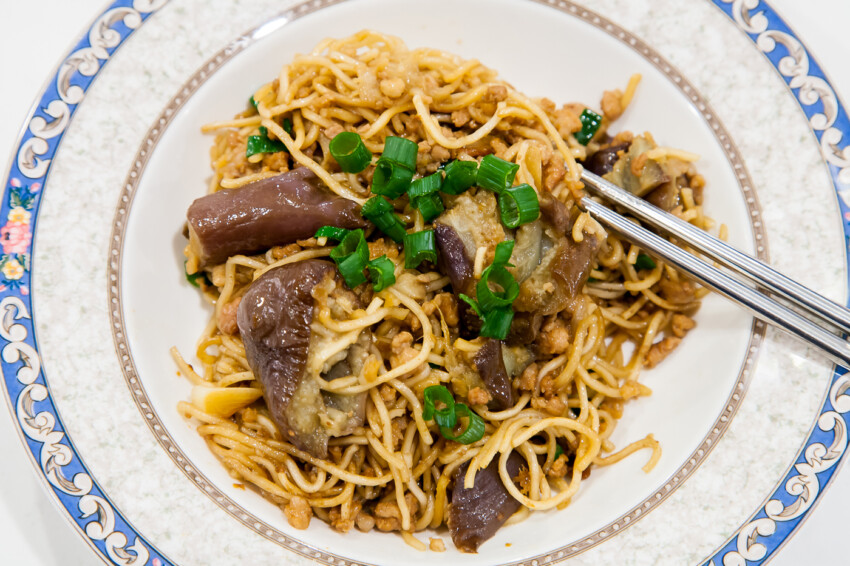
Eggplant Braised Noodles (茄子焖面 Qie Zi Men Mian)
September 10, 2022 Print
I have been quite busy these past two weeks. My oldest started 1st grade in early August here in Texas. So our whole family is adjusting to the early morning school routine and miscellaneous school related appointments and activities. I have been making less time consuming meals for the past two weeks as a result. This braised noodle dish is another one-bowl-meal I make for my family during busy periods.
I posted a Green Bean Braised Noodles recently, which is another quick dinner option involving braised noodles. This version, however, includes eggplants instead of green beans. If you like noodles or eggplants, this will really hit the spot.
Preparation Time: 10 minutes
Total Time: 25 minutes
Servings: 4
Ingredients:
- 3 Chinese or Japanese eggplants 1
- 1/2 lb ground pork or pork belly 2
- 1 1-inch long piece of ginger
- 2 to 3 garlic cloves
- 2 green onions
- 2/3 lb fresh noodles
- 1 tablespoon Chinese Shaoxing wine
- 1 tablespoon dark soy sauce (老抽)
- 1 tablespoon soy bean sauce (黄豆酱) 3
- ~1 cup water
- 1 teaspoon Chinese dark vinegar or balsamic vinegar
- 1 tablespoon vegetable oil
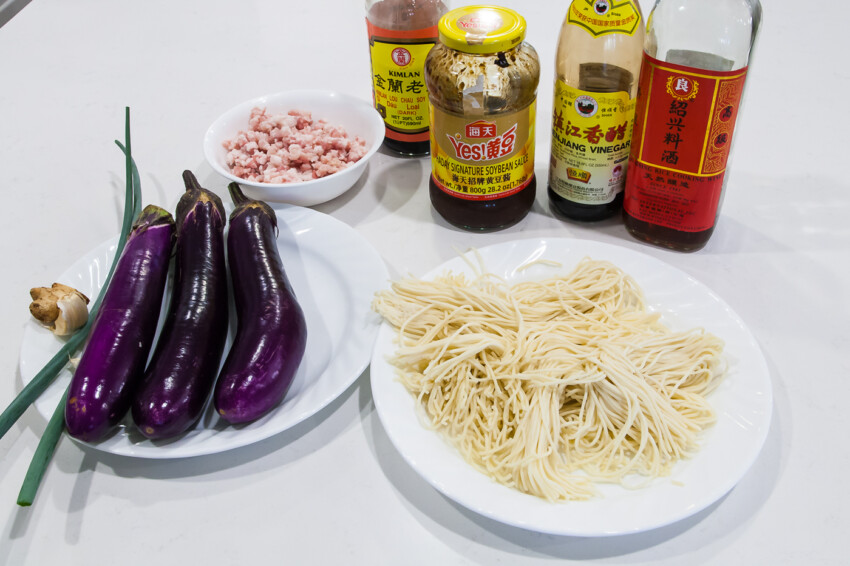
Preparation:
- Wash the eggplants. Remove the stem tip. Roll cut the egg plant into large chunks. Peel and mince the ginger. Peel and slice the garlic cloves. Slice the green onion into small pieces.
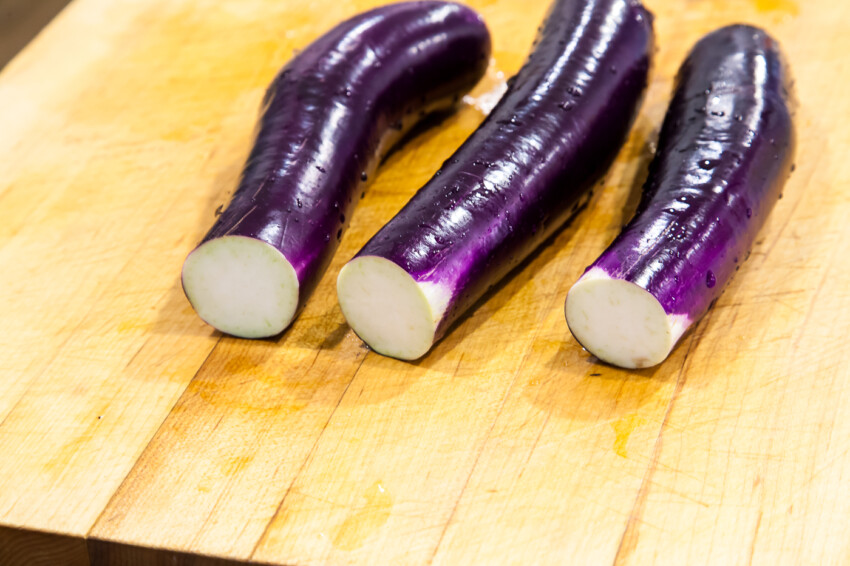

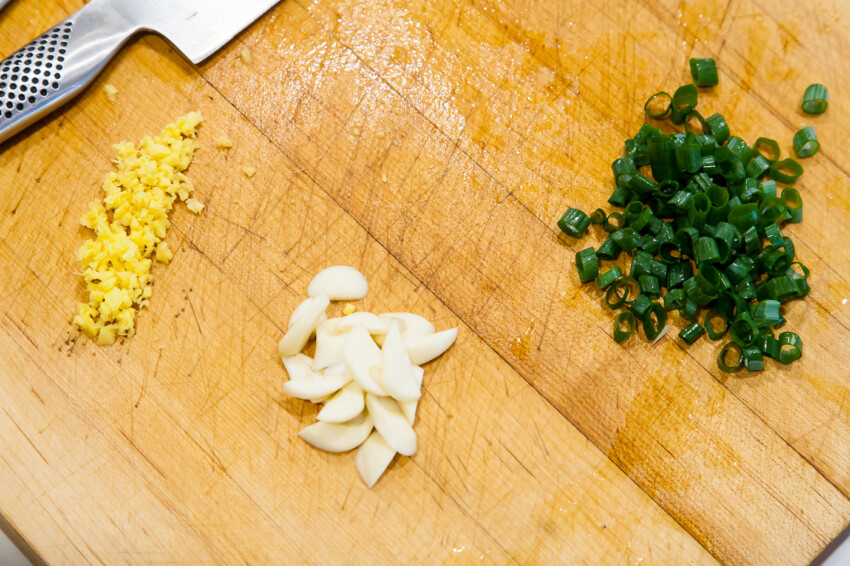
- Heat a large nonstick pan under medium heat. When the pan is warm, add 1 tablespoon of vegetable oil. Wait a few seconds then add the ground pork and stir immediately. Add 1 tablespoon of Chinese Shaoxing wine and mix well. When the ground pork changes color from raw pink to white, add the minced ginger, sliced garlic, and 2 teaspoons of dark soy sauce, stirring and tossing together.
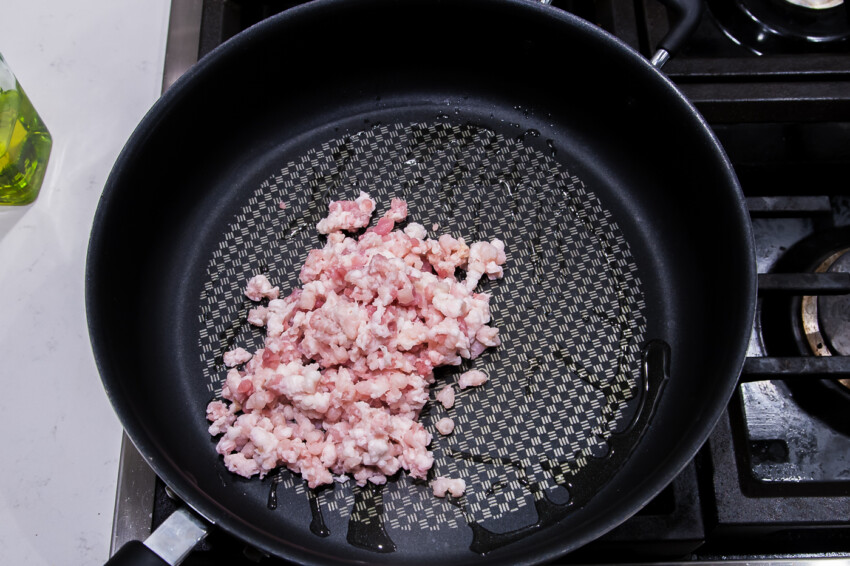

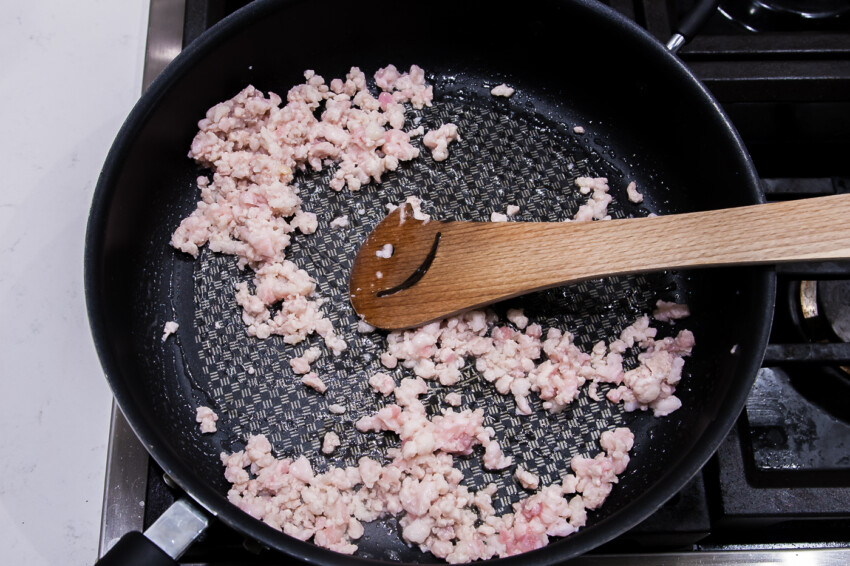
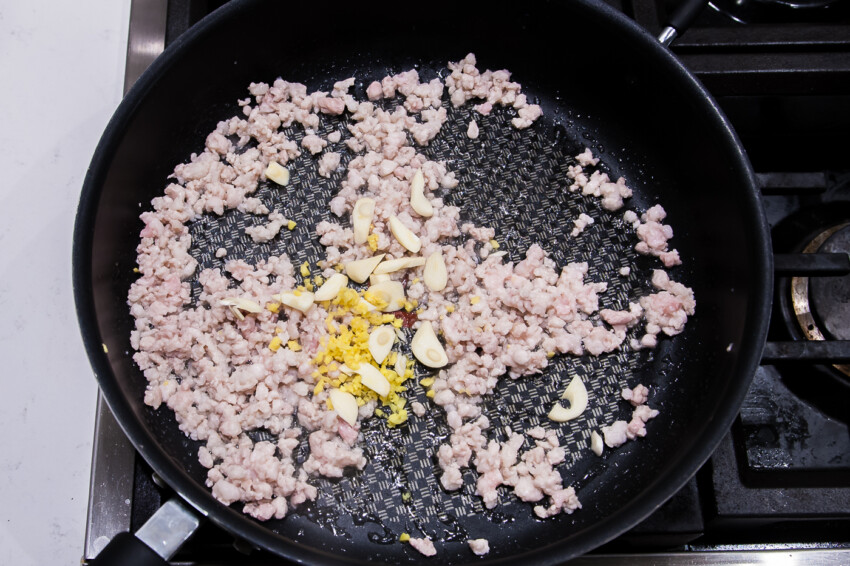
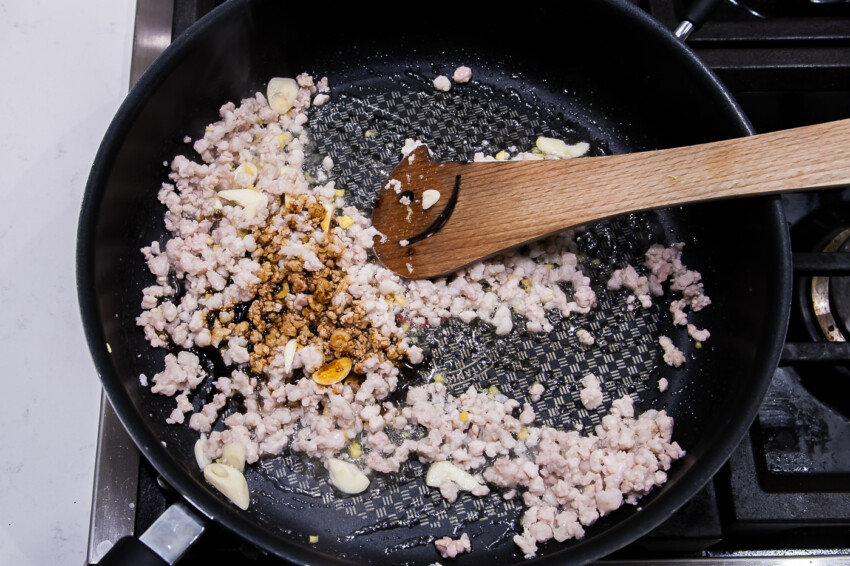
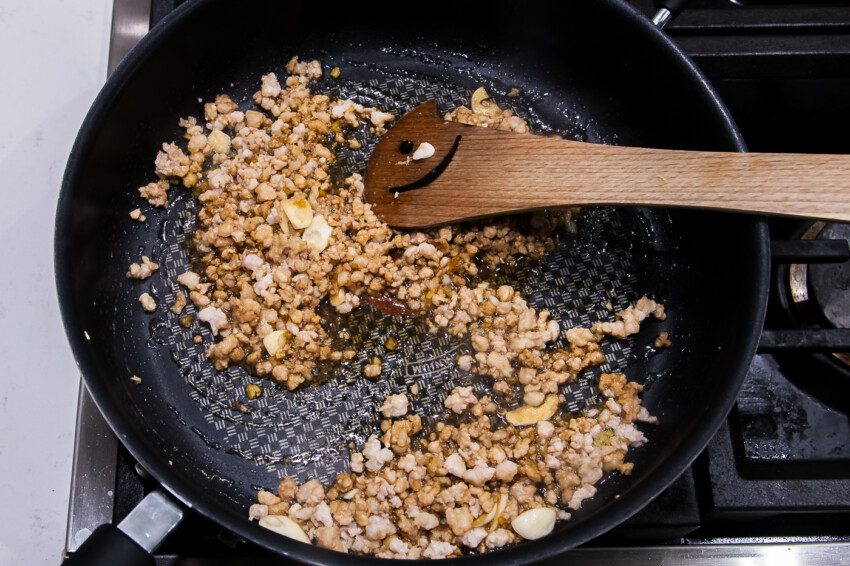
- Add the eggplant chunks and 1 tablespoon of soy bean sauce, stirring everything together. Pour ~1 cup of water to the pan, mixing again. Close the lid and cook for 5 minutes, stirring and tossing once during the 5 minutes.
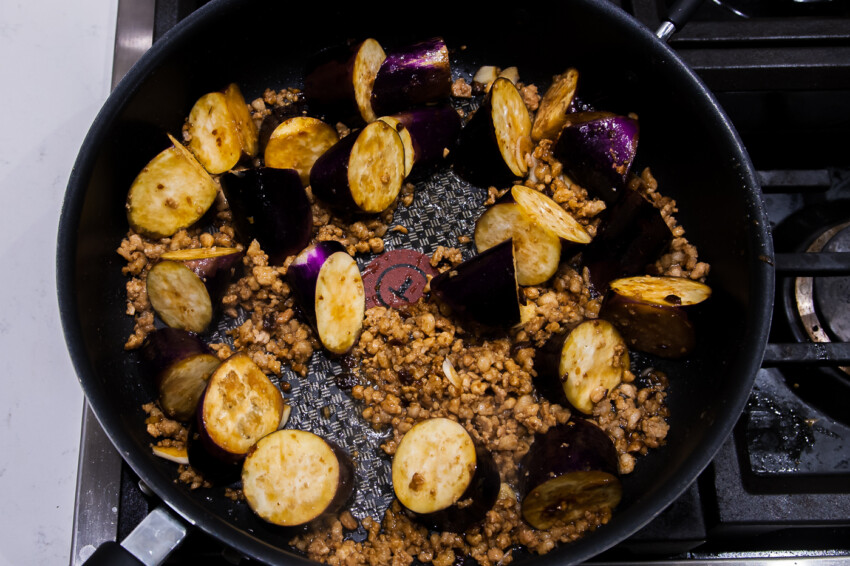
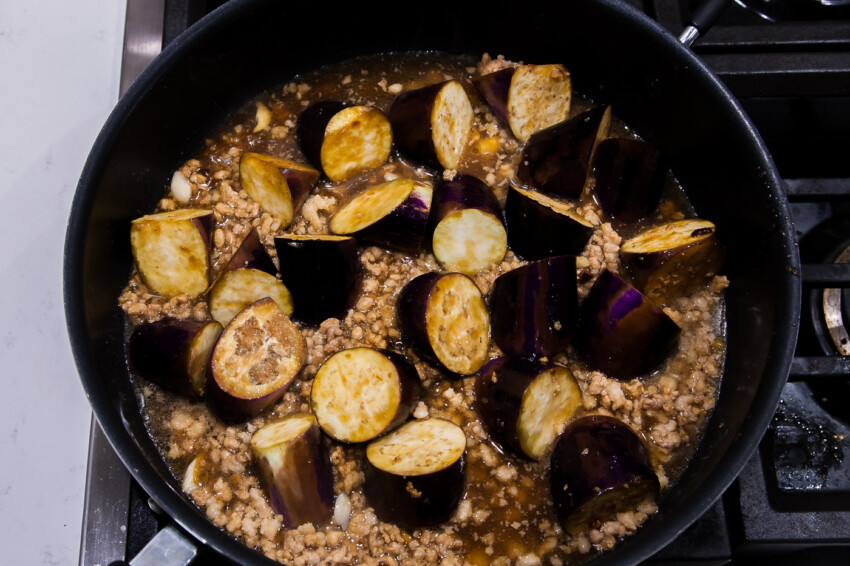
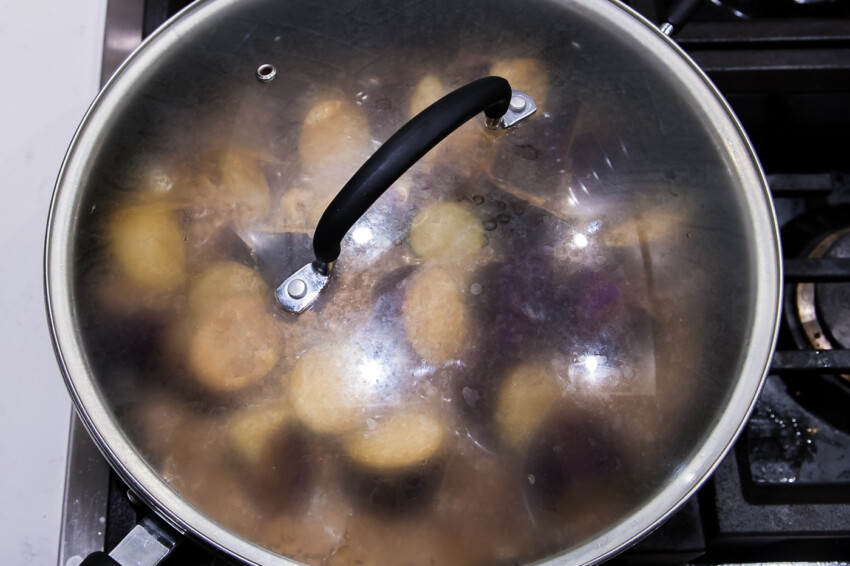
- Remove the lid and turn the heat to low or medium low to maintain a slight simmer. If there is enough liquid, scoop out a full ladle and set aside.4 Spread the fresh noodles evenly on top of the eggplants, using your hands to separate any clumps. Drizzle the liquid that was set aside over the noodles. Cover the lid again and let everything cook under low heat for 3 to 5 minutes until the noodles are cooked through.

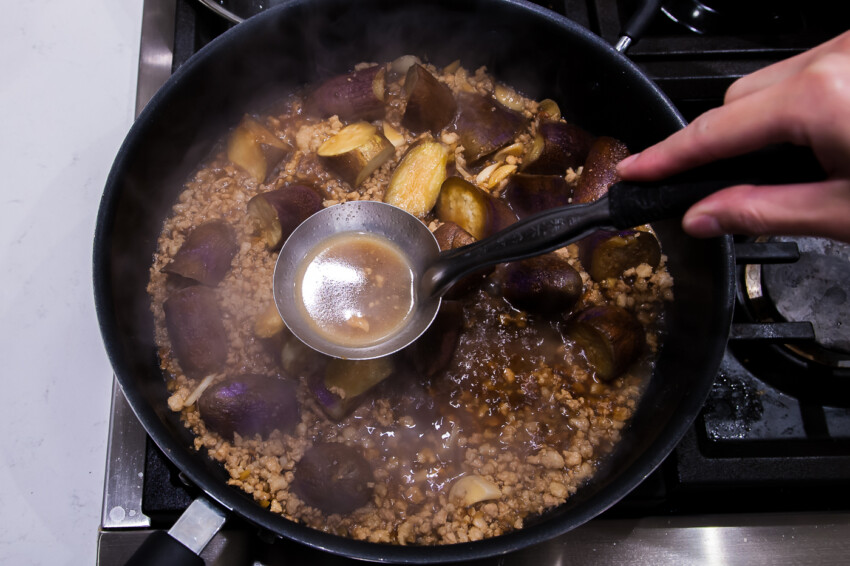
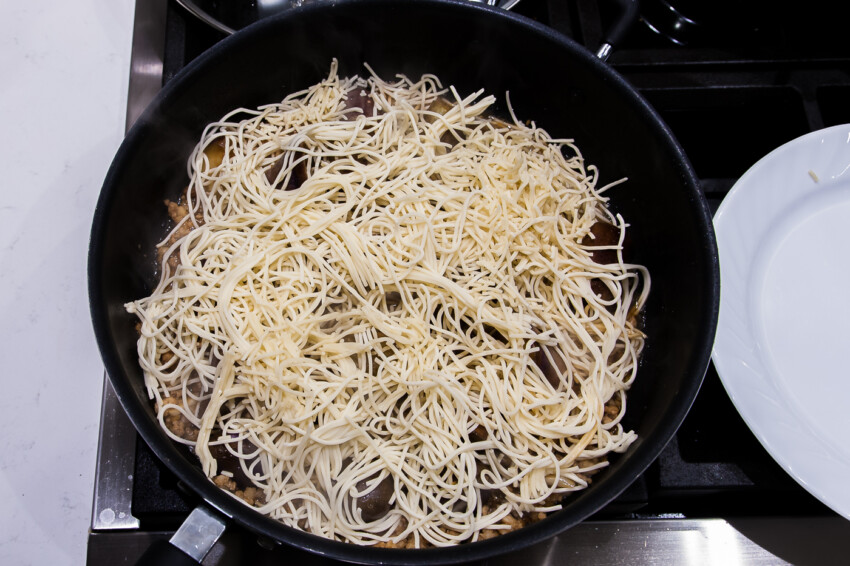
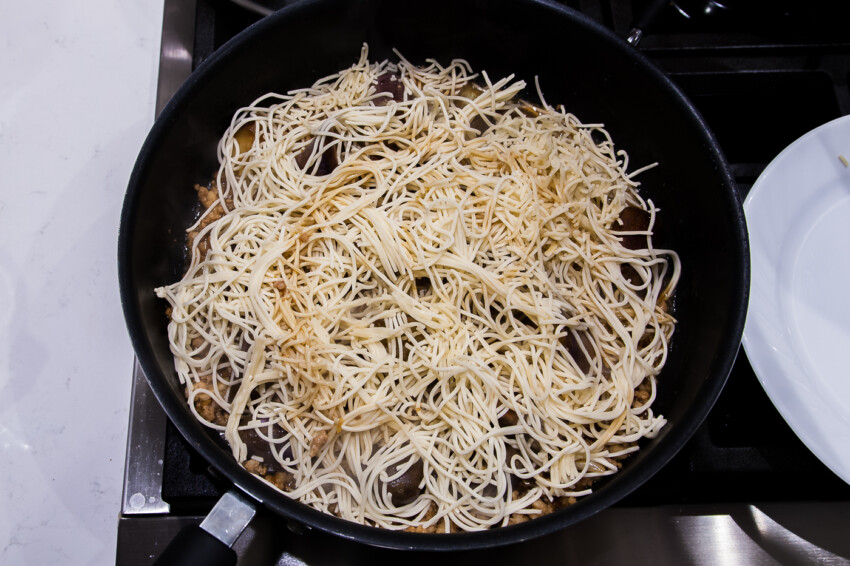
- Remove the lid. Use a pair of chopsticks or tongs to mix everything together. The liquid should be mostly absorbed by the noodles at this point. Cover the lid again for another minute. Then turn off the heat and drizzle the 1 teaspoon of Chinese dark vinegar and mix well. Divide the noodles into 4 equal portions and enjoy!
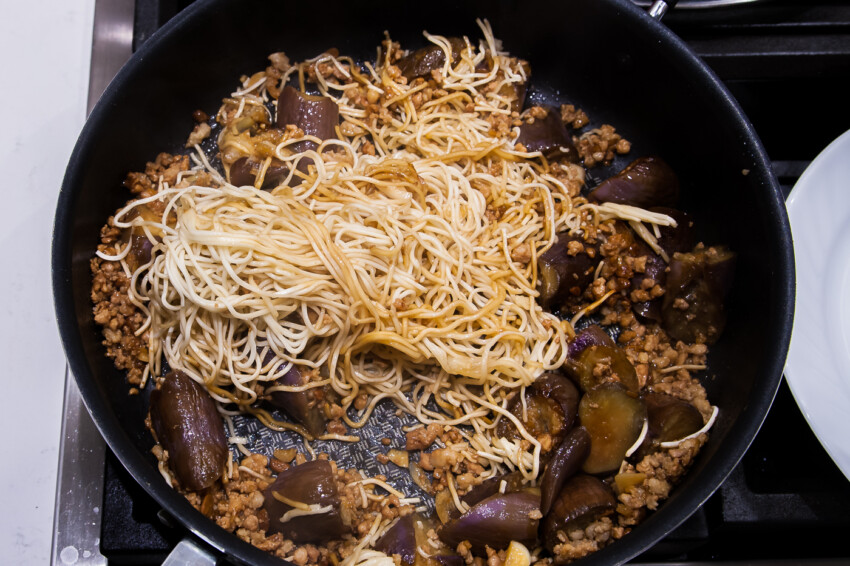
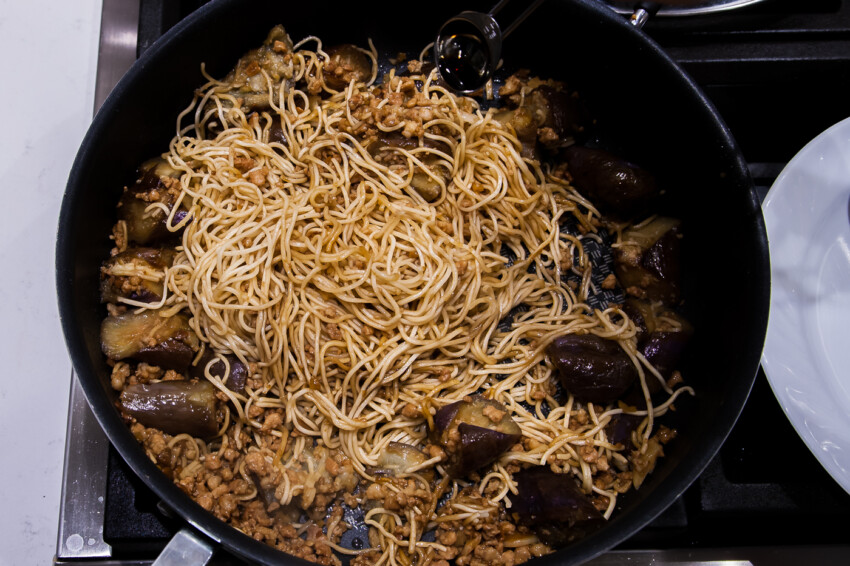
Bon Appétit

Notes:
- The Chinese and Japanese eggplants have thin skin and long figures. They also have very few seeds, which make them much less bitter and more delicate and flavorful. When shopping for them in Asian grocery stores, look for the ones that have a deep purple hue, smooth skin, slender shape, and an intact stem tip. Don’t buy the ones with brown spots on the skin. If you can’t find either Chinese or Japanese eggplants, you can use other types of eggplants, but with skin removed.
- It’s better to pick ground pork with a higher fat ratio. Here I ground my own meat using pork belly, which has higher fat ratio than ground pork bought from stores. If you happen to have a KitchenAid Mixer, you can use a KitchenAid meat grinder attachment, which is what I use to grind my meat. I would recommend getting one that is fully stainless steel.
- You can get soy bean sauce (黄豆酱) from pretty much any Asian grocery store these days. If you can’t find it, substitute with 2 tablespoons of light soy sauce and 1 teaspoon of sugar or 1 tablespoon of oyster sauce.
- Depending on your pan and stove, water can evaporate more quickly. If you have little or no water left when opening the lid, add 1/2 cup of water to the eggplants and mix well. Then spread the noodles on top.
As an Amazon Associate I earn from qualifying purchases.



